Are you a dynamic individual with a passion for management, a knack for organization, and an eye for detail? If so, you may have what it takes to become a facilities manager. A facilities manager is responsible for the upkeep and maintenance of an organization’s physical space. This role generally requires an individual who can think strategically, understand business operations, and make informed decisions regarding facility maintenance. If you desire to work as a facilities manager and are looking to get started in this field, your resume is your first opportunity to impress potential employers. An effective resume will catch the attention of likely hiring managers and prove that you are ready to take on new responsibilities as a facilities manager. In this blog post, we will explore tips and tricks on writing an impressive resume and sample resumes from illustrative professionals in this field so that you can get inspired!
Facilities Manager Resume Example

Download This Facilities Manager Resume as PDF
Event Manager Resume Example
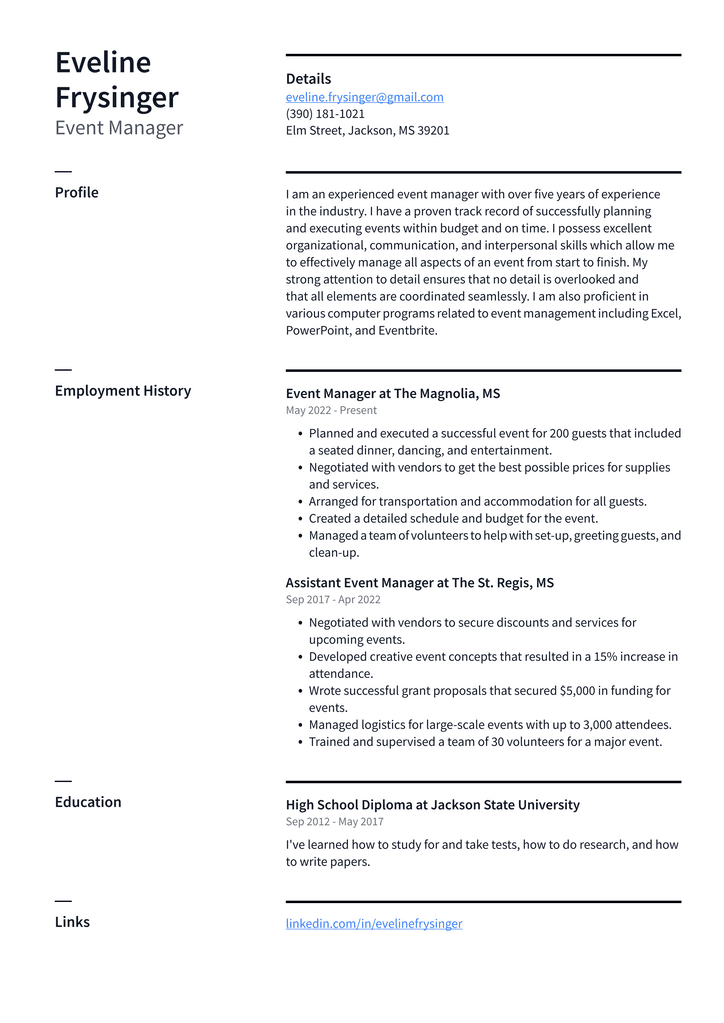
Download This Event Manager Resume as PDF
Maintenance Manager Resume Example
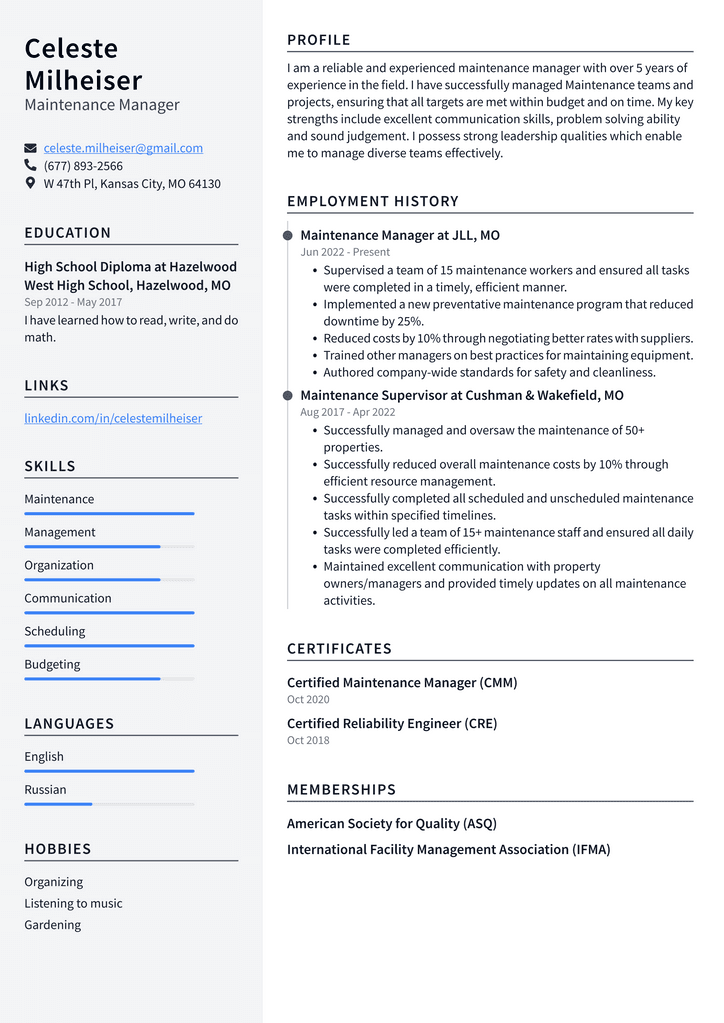
Download This Maintenance Manager Resume as PDF
Custodial Manager Resume Example
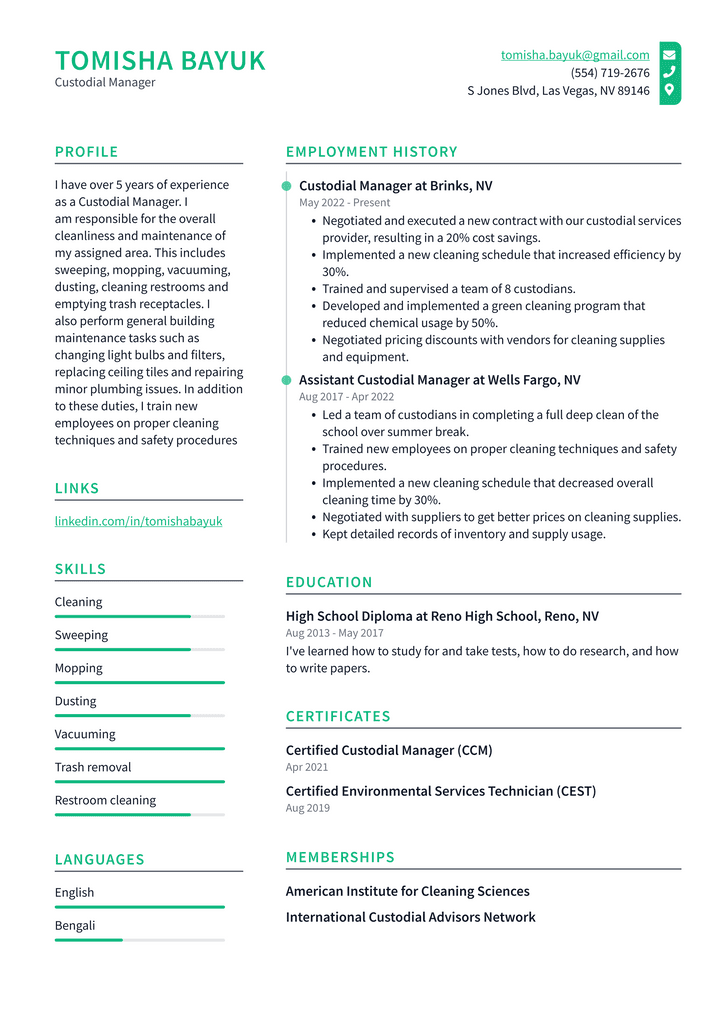
Download This Custodial Manager Resume as PDF
Security Manager Resume Example
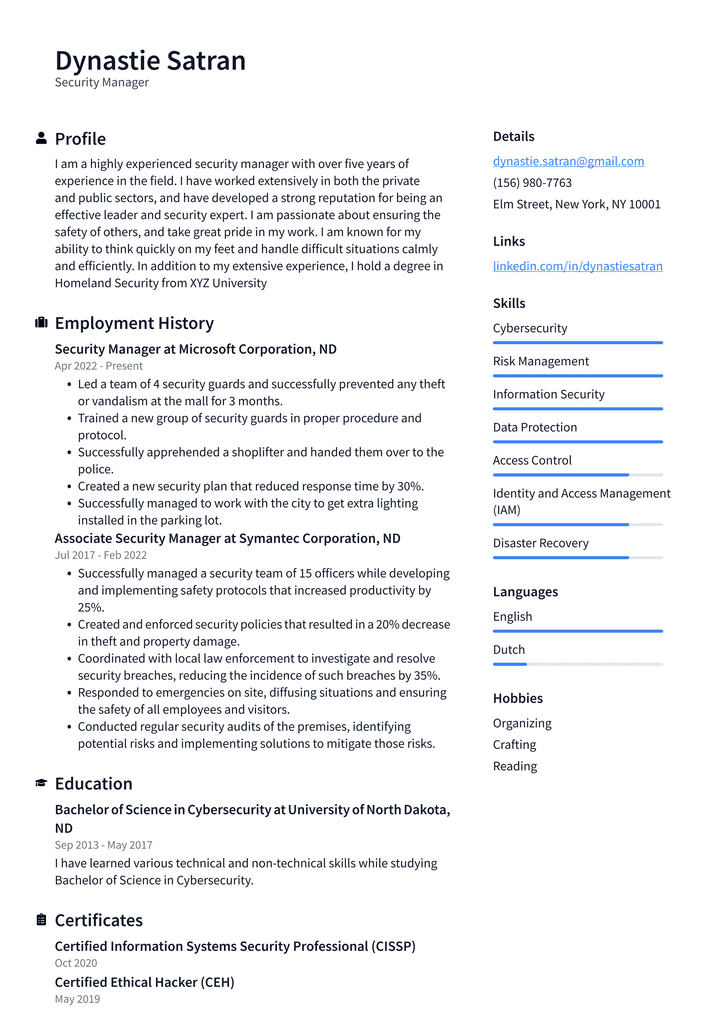
Download This Security Manager Resume as PDF
Housekeeping Manager Resume Example
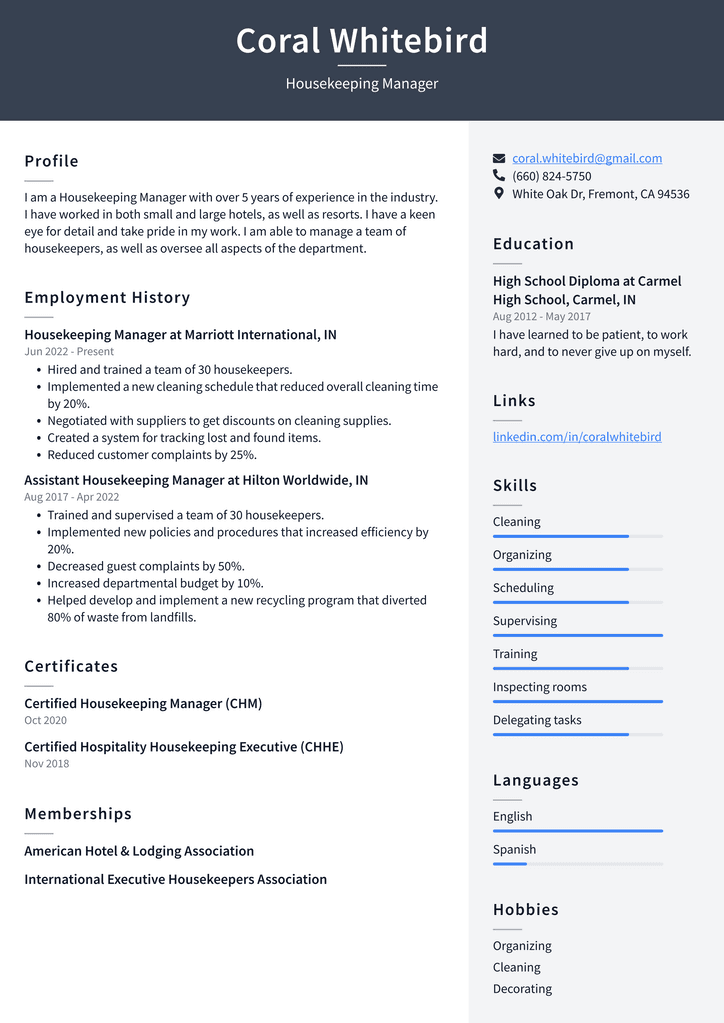
Download This Housekeeping Manager Resume as PDF
Assistant Facilities Manager Resume Example

Download This Assistant Facilities Manager Resume as PDF
Resume Basics
Before we jump into the nitty-gritty of how to write a resume, let’s start with some essential tips that will help you shape a high-quality resume from the get-go. – Your resume should be between one and two pages long. Any longer, and hiring managers may lose interest. Any shorter, and you may be missing crucial information. – Use action verbs and quantifiable achievements to describe your experience. Avoid fluffy language, like “responsible for managing inventory” and “handling a team of five employees,” and instead use stronger language, like “reduced inventory by 15% in one year” and “built a team of seven employees in six months.” – Include your education and any training you may have done, but keep it brief. Too much information will make your resume drag on and sound too academic.
Write a vital resume objective
If you’re wondering whether you should include an objective on your resume, your answer is yes! The resume objective is a short, one- or two-sentence paragraph that explains why you are the right candidate for the job. This can be one of essential parts of your resume, as it is your opportunity to show hiring managers why you are the best candidate for the job. When writing this section, focus on the employer’s needs and how you can meet those needs. A vital objective should be tailored to each job you’re applying for. If you have multiple resume templates saved on your computer, you may notice that some have an “objective” section, and others have a “resume summary” section or something similar. These are all variations of the objective and are often used interchangeably.
Resume Format and Layout
Now that we’ve covered what should be included in a resume let’s talk about the layout and formatting. There are no standard rules for how to format your resume, as every industry has its expectations. However, a few tips apply to a wide range of industries and situations. – Your resume should be printed on white, ivory, or off-white paper. Avoid colored and patterned paper, as it can make your resume look unprofessional and distract you from your content. – Use a standard font like Times New Roman, Arial, Calibri, or Cambria. Avoid decorative and overly stylized fonts, which can make your resume look unprofessional. – Use bullet points and short paragraphs to break up sections that are longer than one paragraph. Long paragraphs can be challenging to read, and hiring managers don’t want to be bogged down by walls of text when they’re skimming your resume.
Listing your most relevant job experience
The first section of your resume should list your most relevant job experience. Place your most recent experience first and your earlier experience last. For each job, include the company name, job title, start and end dates (if they aren’t listed on your resume), the city where you worked, and the name of your direct supervisor. Reread each entry, editing as necessary to ensure your resume is clear, concise, and error-free. You’ll want your experience to show how ready you are to take on a new management role. When listing your work experience, here are a few tips for formatting and content that will help catch the attention of hiring managers and get you noticed.
- Include relevant keywords. Employers use software to scan resumes for key terms that indicate the applicant is qualified for the job. You might be overlooked if you don’t have those key terms on your resume.
- Format each entry like a mini-resume. Your dates of employment, job titles, and supervisors’ names are important. However, they are also something you can move to the bottom of your resume.
- Highlight your achievements and transferable skills. Employers want to see how you can benefit their company, so focus on your accomplishments and transferable skills.
Listing other experience and qualifications
Even if you have little or no job experience, your resume should contain the full range of your qualifications and abilities. This part of your resume should be where you list any skills or qualifications that aren’t directly related to your work experience. This can be as simple as “proficient in Microsoft Word” or “certified in OSHA safety practices.” Include these other qualifications since they are essential to employers and can help you get noticed.
Conclusion
Now that you’ve read up on how to write a resume that gets noticed, it’s time to get started! Take the time to reread these tips and examples, and make sure you apply them to your resume. Once you’ve written an excellent resume, it’s time to apply for facilities manager positions. With a resume this strong, you’ll be one step closer to a new job and a new career. With the proper preparation, you’ll be able to make a great impression on hiring managers and get invited to in-person interviews.